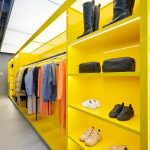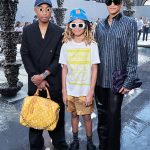The fashion certification sphere is a mosaic made of hundreds of pieces. With standards focusing on different aspects consumers and brands alike are overwhelmed by the choices. While consumers most often don’t know what each certification really stands for and don’t have the in-depth knowledge to make an informed purchasing decision, brands face a different challenge. Many of them are wondering how to start their sustainable transition, which certifications to obtain for a holistic approach and how to communicate what they have already achieved in a way that doesn’t leave consumers confused.
And then there is the criticism of certifications not going far enough, not being precise enough. To paint ideal and concise impact scenarios is important. But it’s equally important that more brands start to tackle their sustainable transition at all.
Over the past seven years, industry professionals from textile manufacturing to compliance management, environmental protection have worked on a solution. Their goal was to develop an international fashion standard that supports brands in starting their sustainable transition while following a holistic approach that covers environmental, social as well as consumer health aspects. The standard was also intended to make consumer communication easier. The result is SANE.
SANE: the holistic fashion certification
SANE is a comprehensive fashion standard and member of the United Nations Conscious Fashion and Lifestyle Network, a platform showcasing initiatives that accelerate the implementation of the Sustainable Development Goals. The product certification covers textiles, accessories, footwear and home textiles following a comprehensive approach that looks at various life cycle phases of a product. It focuses on areas where environmental and human impacts are most harmful and where brands and production facilities have the technical capability to implement more sustainable processing methods.
Instead of concentrating on single aspects like Bluesign does with sustainable textile processing and manufacturing practices or narrow scopes like GOTS requiring a minimum of natural fibers, SANE’s scope extends far beyond what is typically covered. The standard puts particular emphasis on the choice of low-impact materials covering all material types, the chemical content of final products, the environmental footprint of processing stages, and the working conditions including remuneration of workers.
To ensure that brands comply with SANE’s criteria, production facilities must undergo certification by an accredited third-party audit. But everyone in the industry knows audit fatigue is growing and some brands might already have other certifications. To avoid unnecessary duplication SANE accepts existing credible sustainability standards.
Achievable and affordable textile certification
This multifaceted approach ensures that the crucial aspects are covered as best as practically possible. While holding high standards SANE is still achievable and enables brands to kick of their sustainable transition with a single product or capsule collection before tackling their entire product range. The standard is also in line with the EU Green Claims Directive. Because in the future that will be the only way a fashion certification can exist in Europe.
What makes SANE additionally interesting for small and medium-sized companies is the cost structure. Because brands pay per production volume – meaning they don’t have to put down a big investment to get started. Instead, they can expand their sustainable product range and up their certifications gradually.
By having one certification covering a bigger scope, SANE makes it easier for brands to communicate their sustainable transition to consumers. But what does the certification mean for consumers themselves? They can more confidently make an informed purchasing decision. With a simple scan of the QR code, they gain a glimpse of where and how their aspiring brand sources and produces. Therefore, the standard helps consumers find products that are aligned with their values and brands that are actively working on their sustainable transition.
On hang tags or stitched onto products, SANE’s characteristic logo stands for products that have been produced with equal consideration for the environment, workers’ rights, and consumers’ health, setting a new benchmark for sustainability in the textile and fashion industry.



